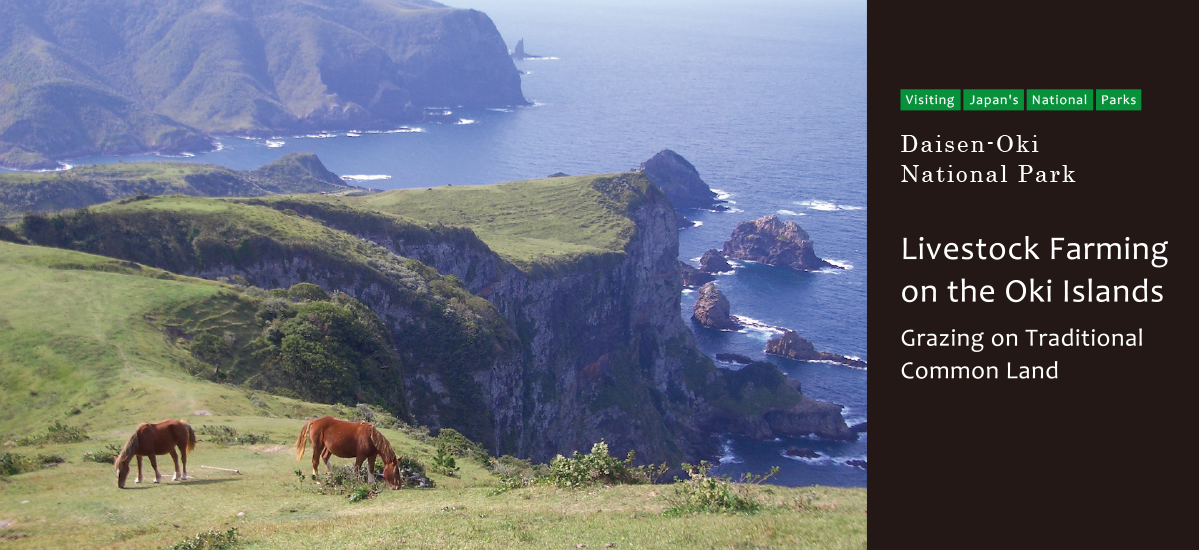

Daisen-Oki National Park, spanning Tottori, Okayama and Shimane Prefectures, is blessed with stunning coastal and mountain scenery. Traces of early human inhabitation abound and the unique landforms here have inspired myths and legends since ancient times, making Daisen-Oki National Park the ideal destination for history buffs and nature lovers alike. We visit the Oki Islands in the most far flung corner of the national park and speak to cattle farmer, Jun’ya Maeide.
Text : Sasaki Takashi / Photos : 谷口哲 Akira Taniguchi / English Version : Judy Evans
Keyword : Daisen-Oki National Park / Farming / Shimane Prefecture / National Parks / Oki Islands
The Isles of Banishment: Sustaining Japan’s Political Exiles
The Oki Islands served as a place of exile for 900 years, from the Heian Period (794-1185) until the beginning of the Edo Period (1603-1868). Banishment was a way of dealing with prominent prisoners such as priests, lords, and royalty who had been defeated in war, committed crimes, or otherwise fallen out of favour. Famous exiles included retired Emperor Go-Toba and Emperor Go-Daigo, both of whom were defeated in power struggles against the samurai military government. The renowned Heian court poet, Ono Takamura, also spent a couple of years in exile here.
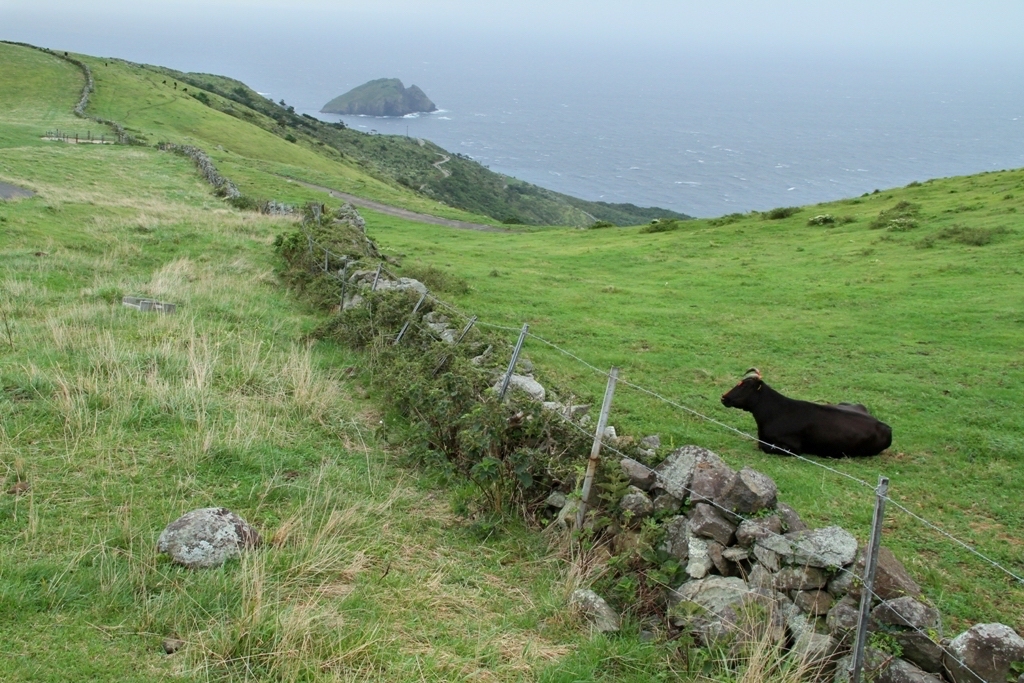
The Oki Islands were chosen as a place of exile not only because of their remote location far from the capital, but also because this was a bountiful land that could support the exiles. Even in exile, care was taken for the well-being of powerful individuals because if they died, they might return as vengeful spirits – and the more prominent the individual, the more powerful the ghost.
Any emperor or aristocrat banished to the islands came with a large retinue, all of whom had to be fed. Despite the remote isolation of the Oki Islands, there was ample water supply and agriculture was well established, rice having been grown here since ancient times. Seafood was also plentiful – the islands were known as the “land of royal provisions”, supplying food for religious offerings to the imperial court such as highly prized species of shellfish.
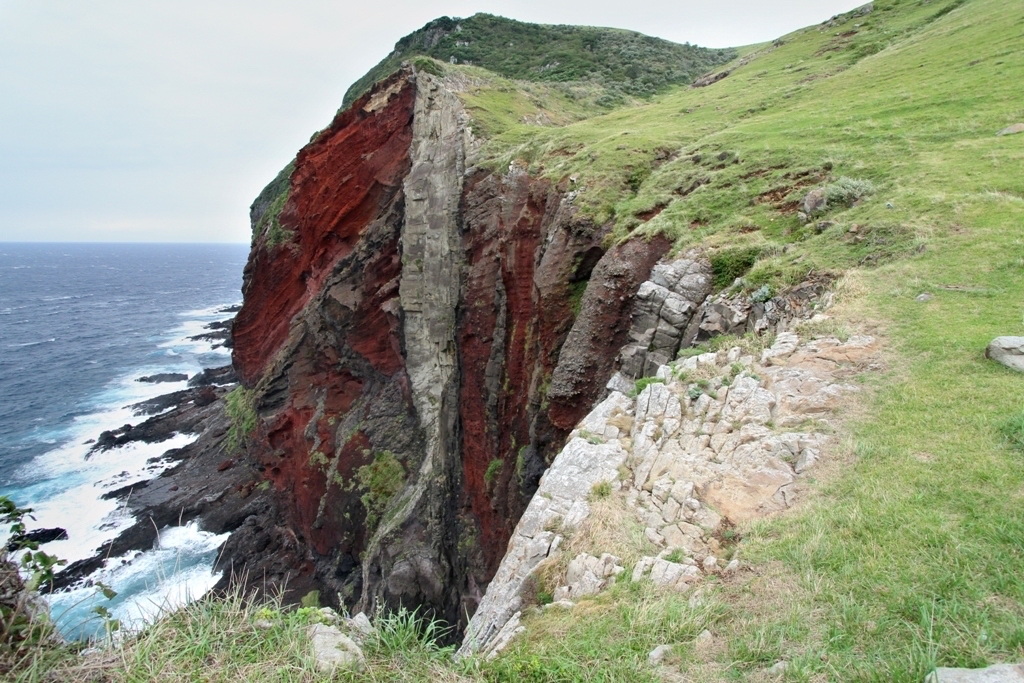
A Rich and Unique Natural Environment that Continues to Sustain
Flat land and fertile soils are scarce on the islands of Nishinoshima and Chiburijima, where the steep sides of the caldera rise straight up out of the ocean. Here, makihata, a farming method dating back hundreds of years, is still practised. Land is divided into four sections, with four-yearly rotations of livestock, beans, millet, and wheat or barley. Although the practice has declined in recent years due to changes in lifestyle, traditionally anybody is free to graze the land. Centuries-old stone walls dividing the land show that pastoral farming has a long history here.
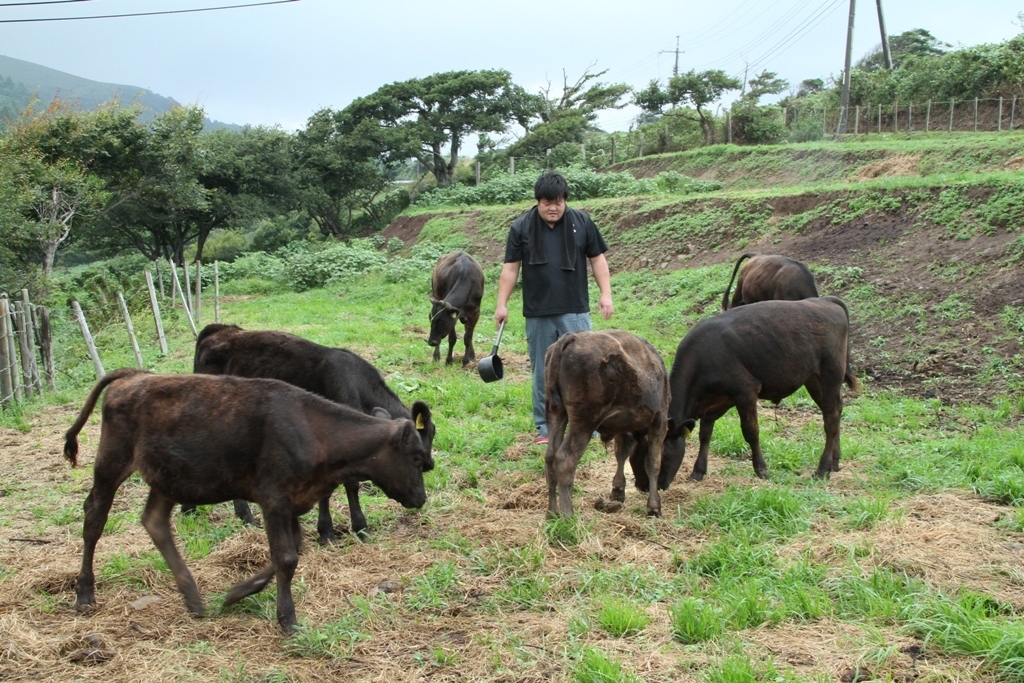
“Cattle do well on these broad, rolling hills”, says cattle farmer Jun’ya Maeide. “The grass contains lots of minerals from the sea and these are sturdy, resilient animals with a reputation for good health”.
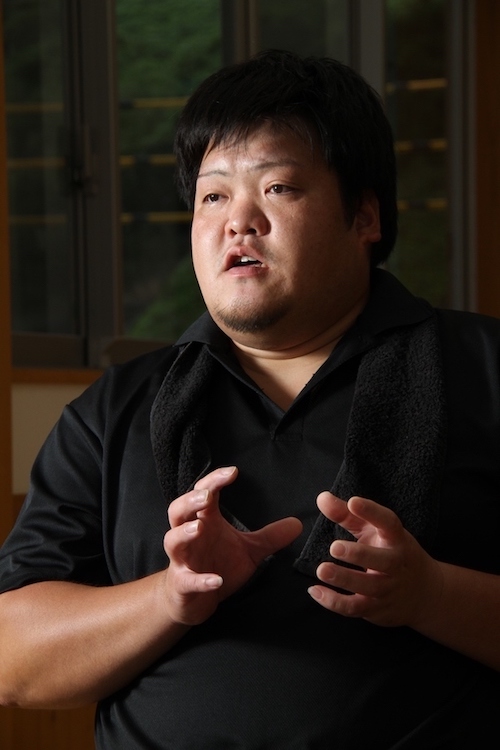
Maeide-san took over the work of raising cattle around 2008, after his father suddenly fell ill. At first he had only about a dozen head of cattle and had to hold down a construction job on the side to make ends meet. With the help of his family though, he increased the number of cattle and now raises about thirty calves per year.
“Here we can graze cattle year-round. There are plenty of springs to provide water, and our costs for supplementary feed are almost nil. This allows me to earn a decent living just from raising cattle,” explains Maeide-san.
The sea cliffs around the Kuniga coast of Nishinoshima provide stunning scenery, with livestock quietly grazing the pasture above these steep cliffs. The bountiful natural environment of Oki continues to sustain those who live here.
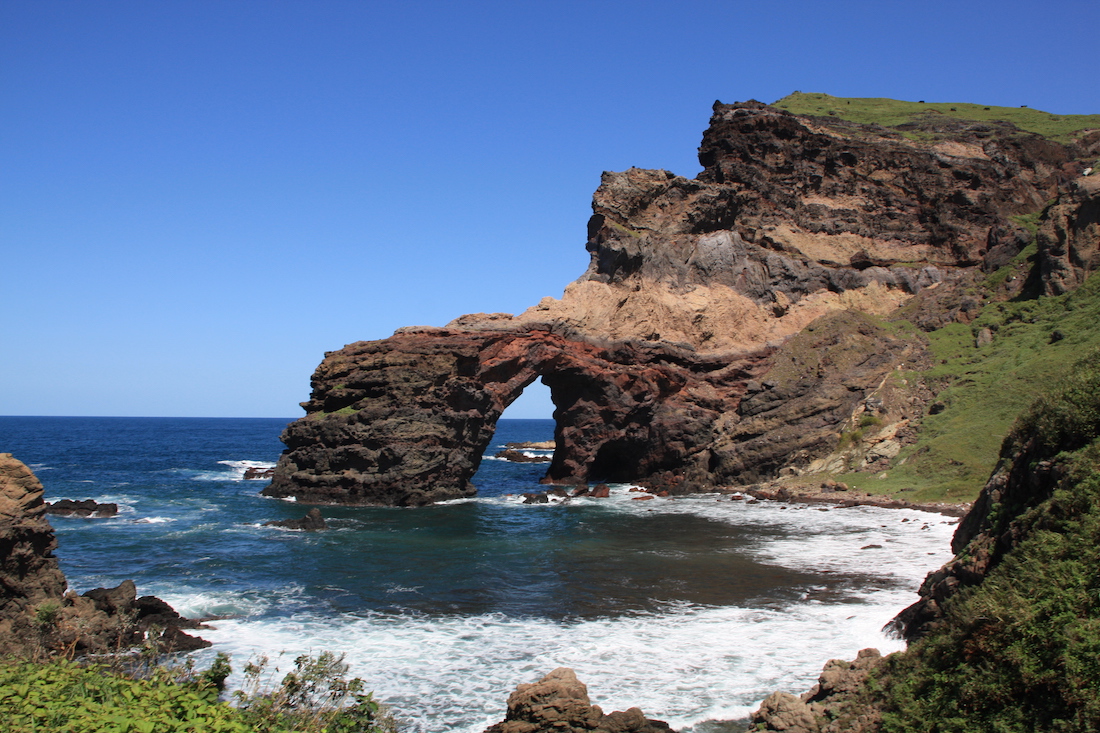
⇩Related Articles
⇩Related Articles








